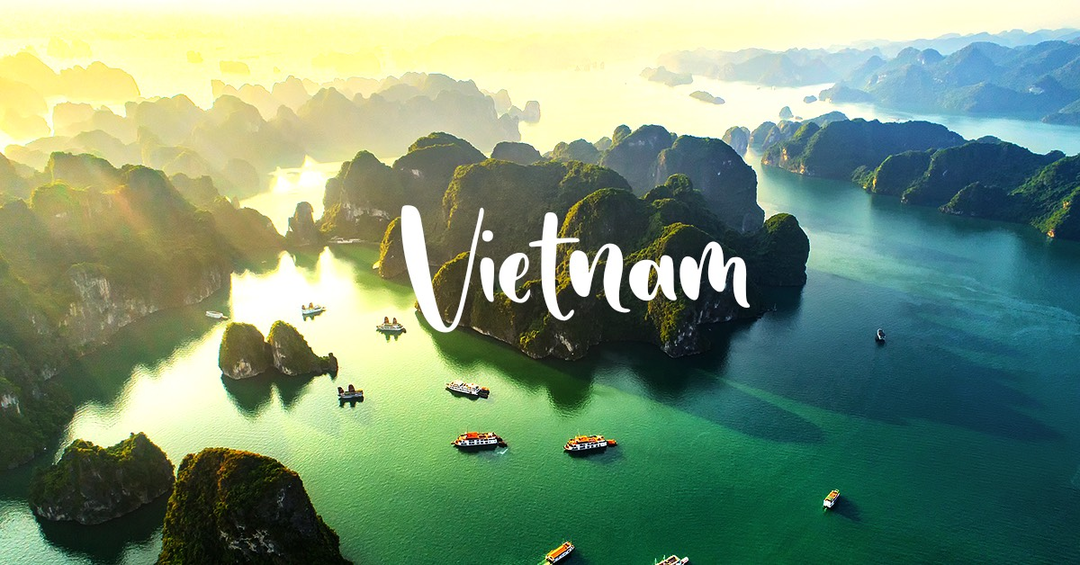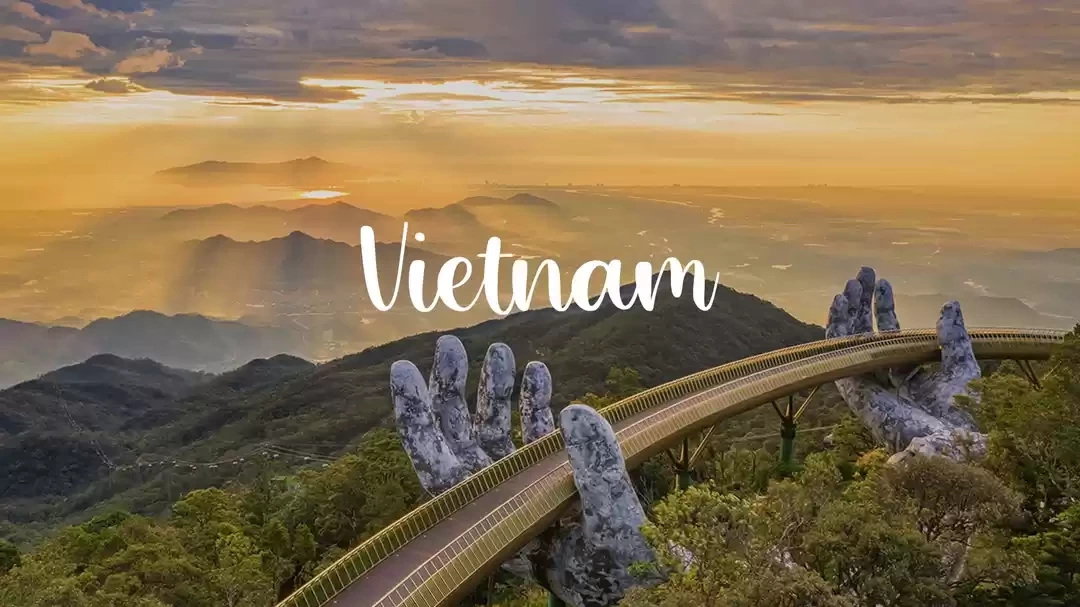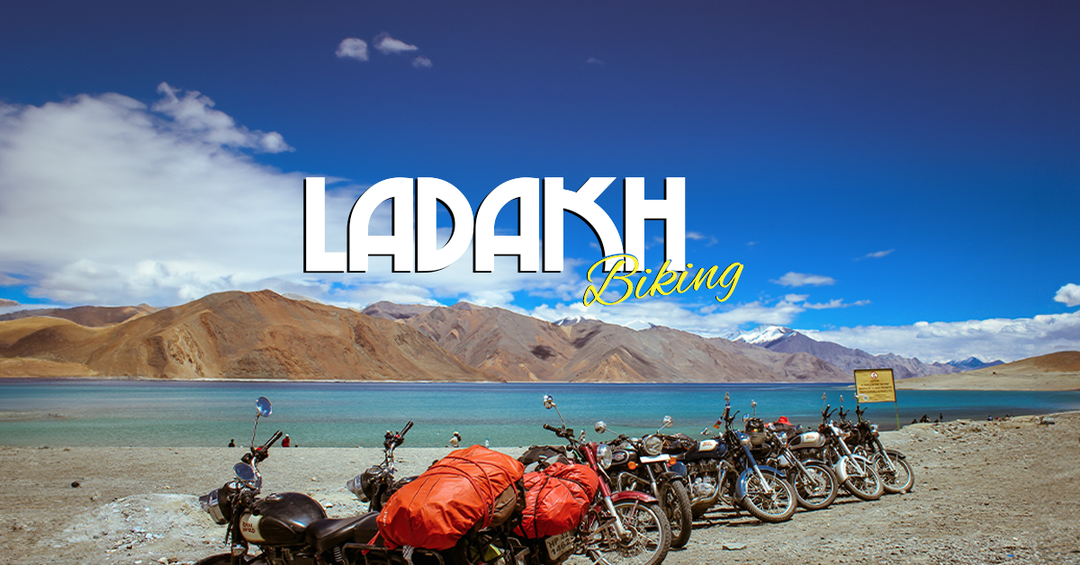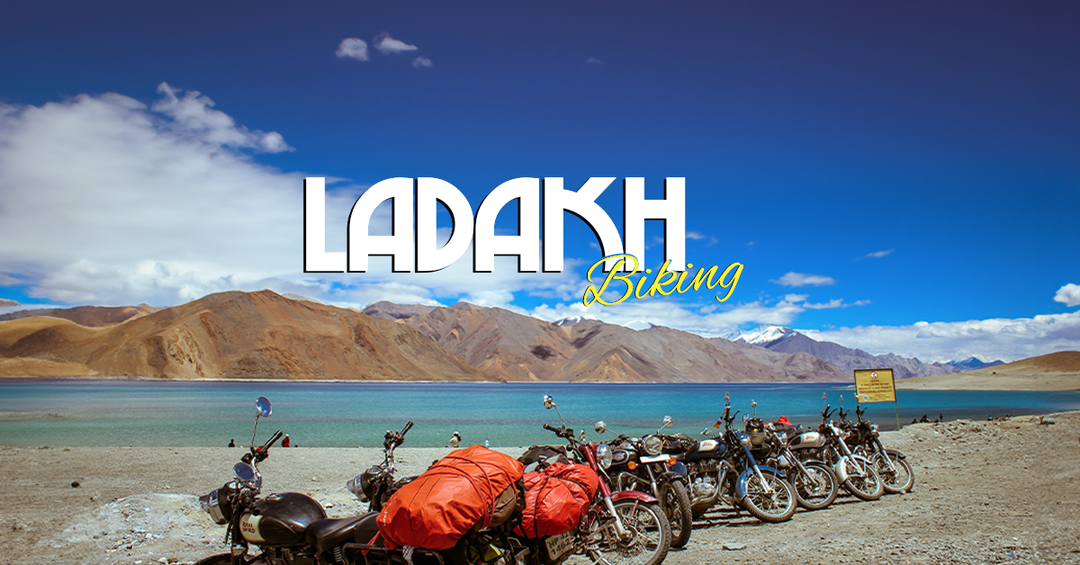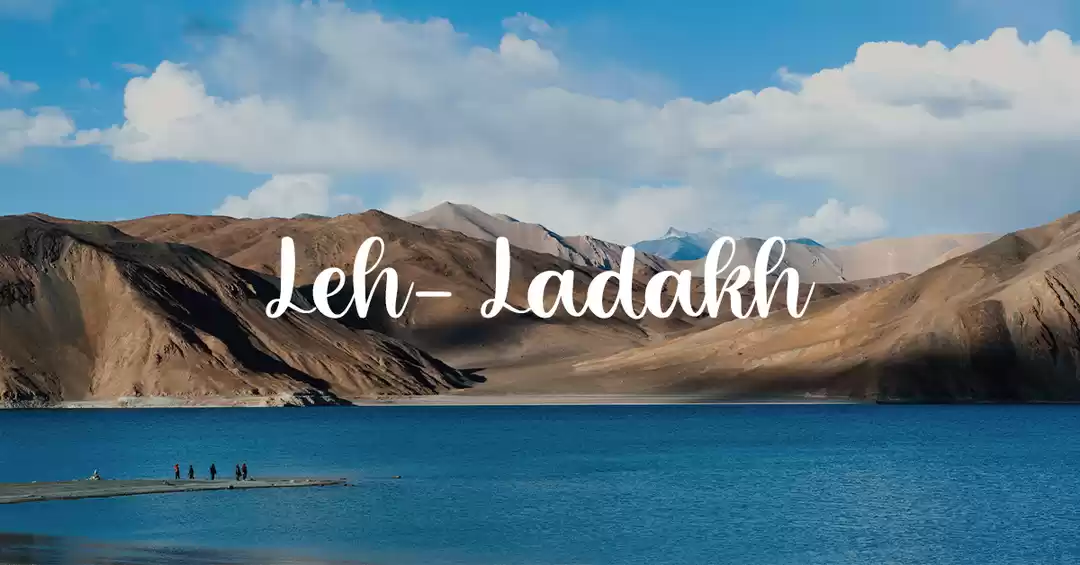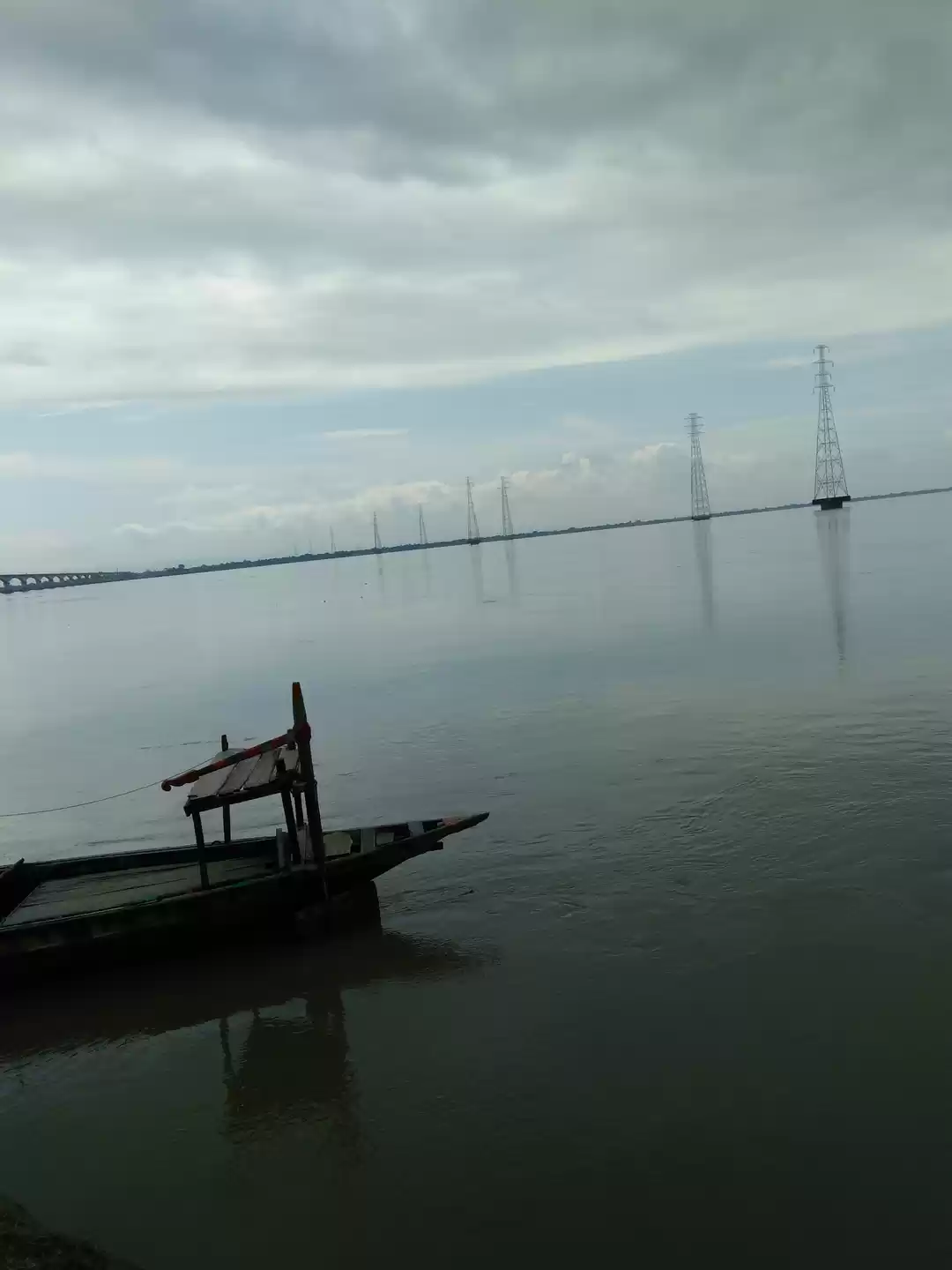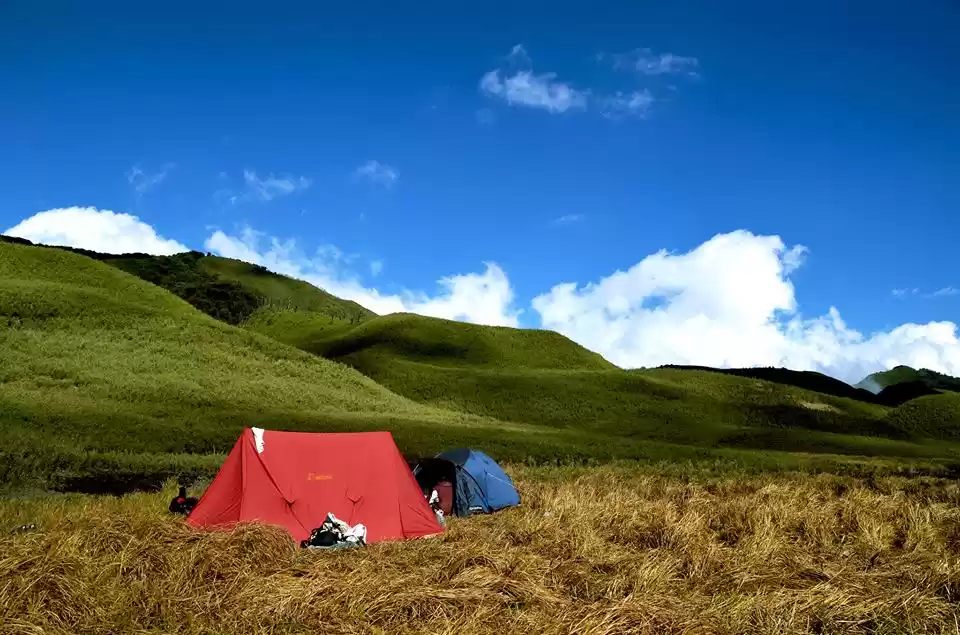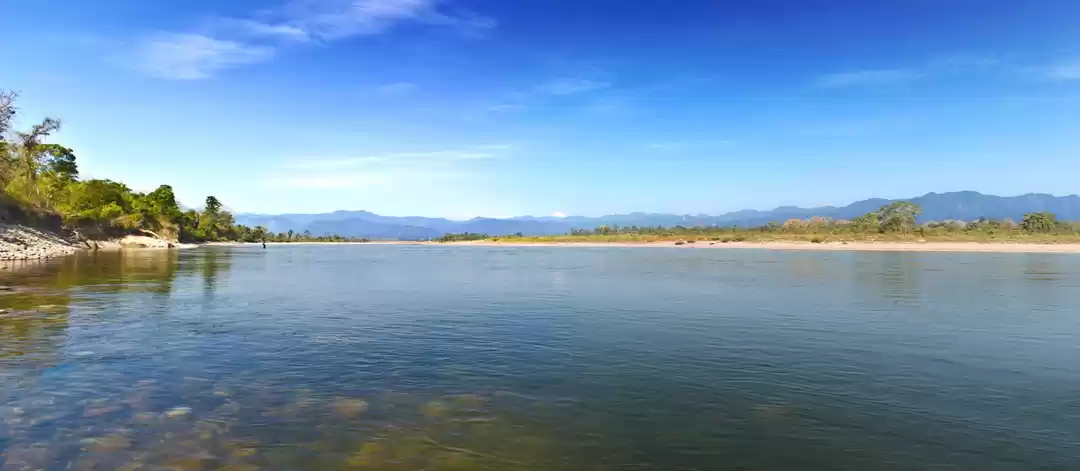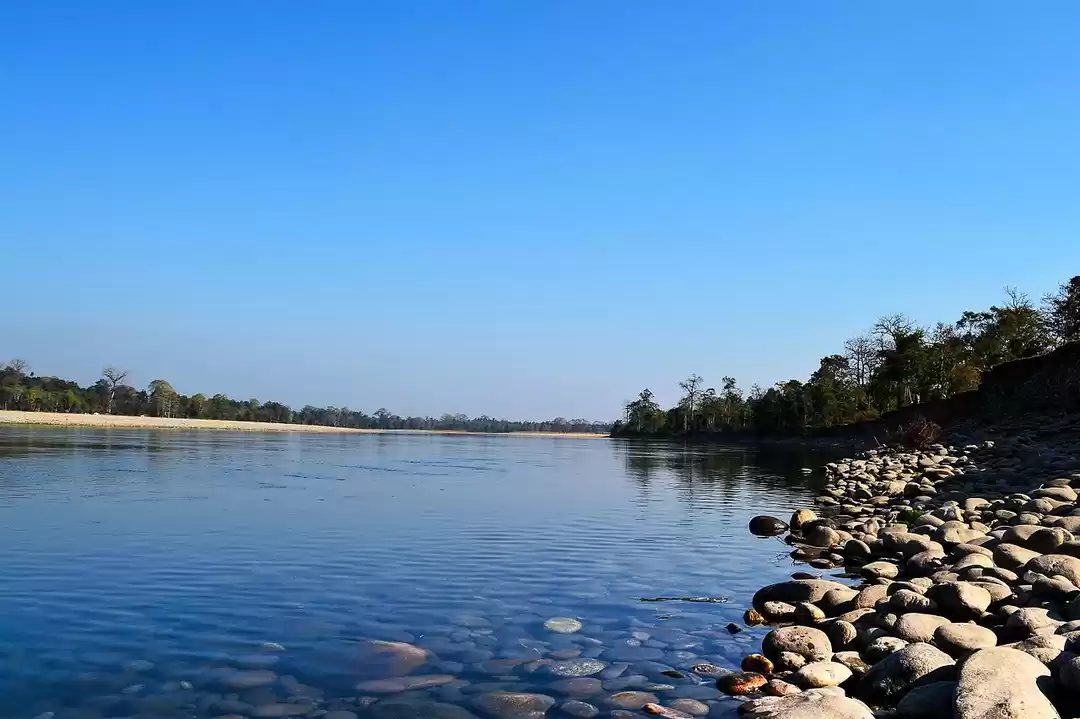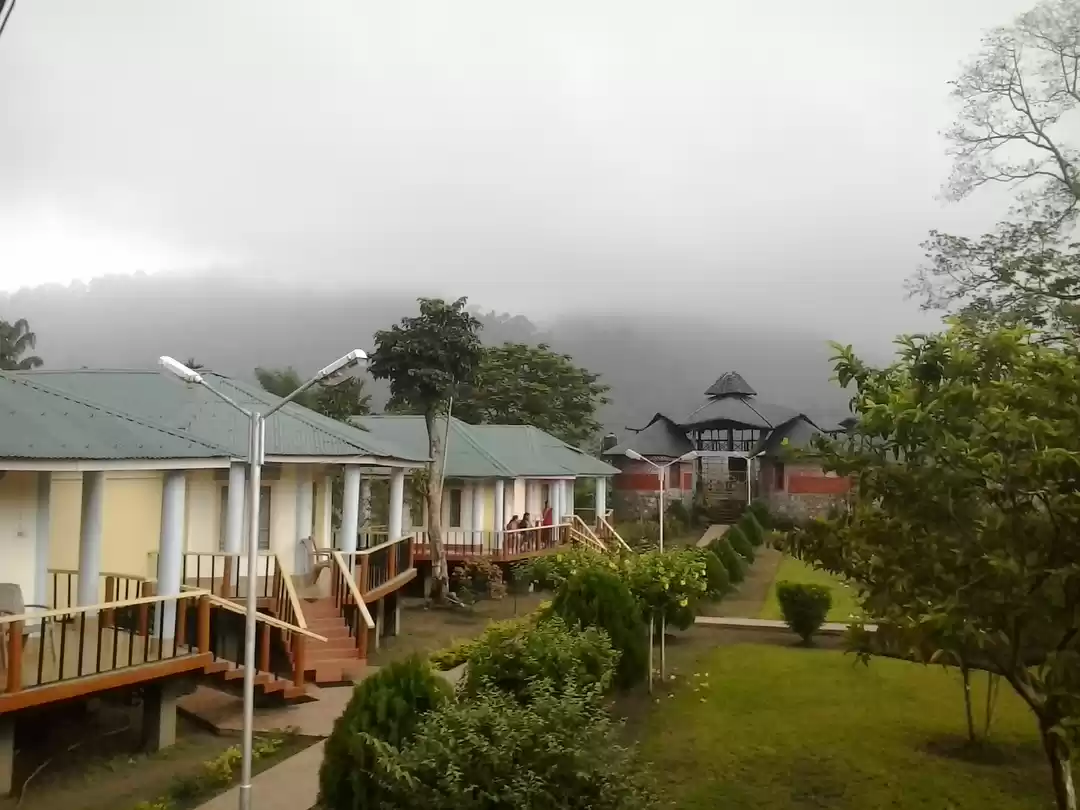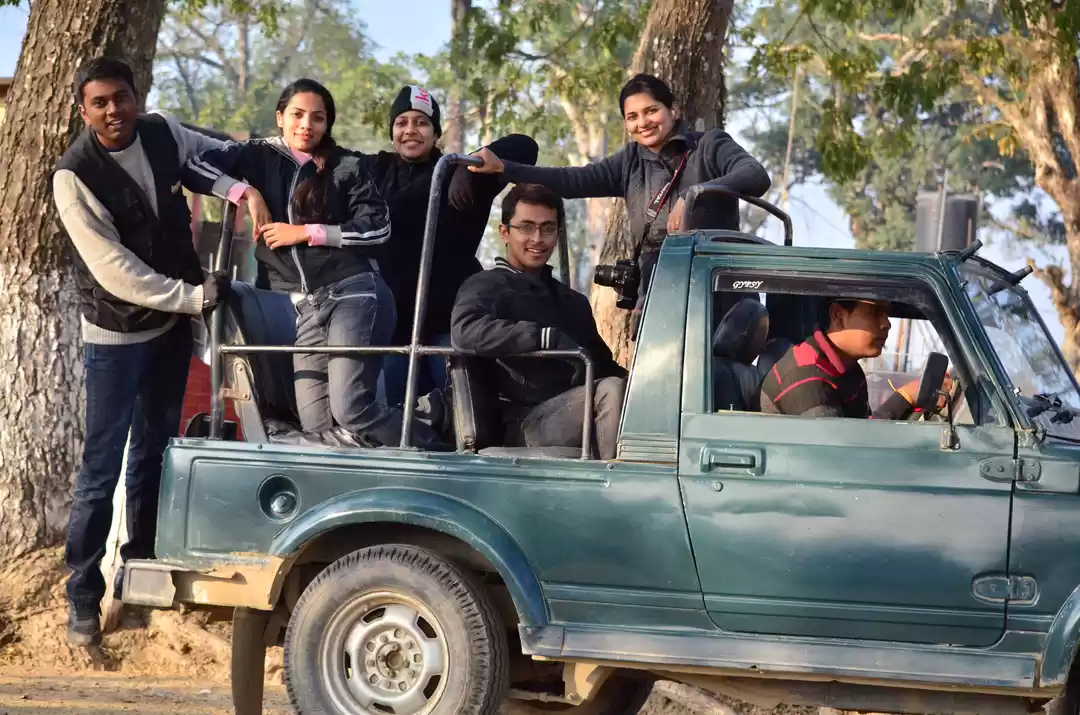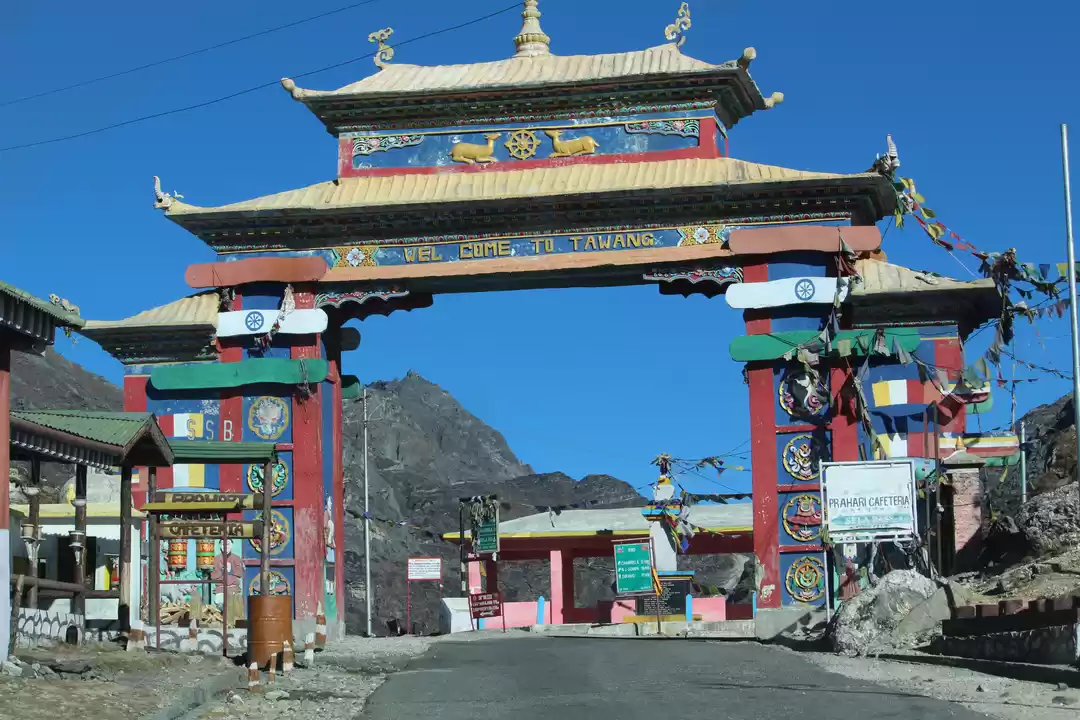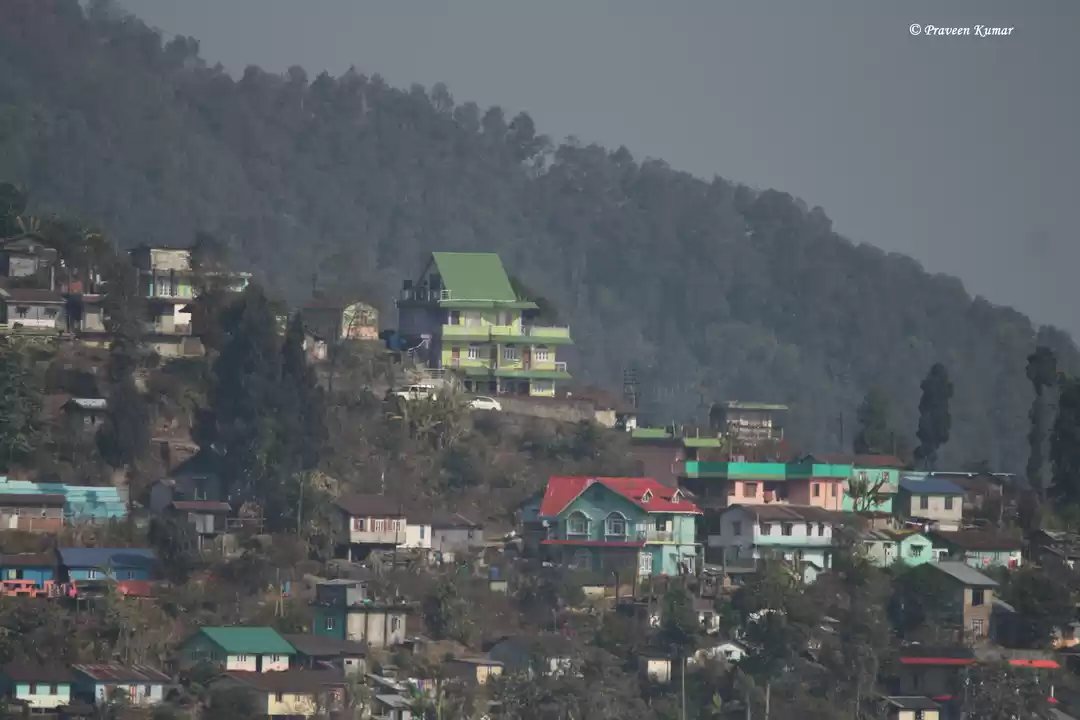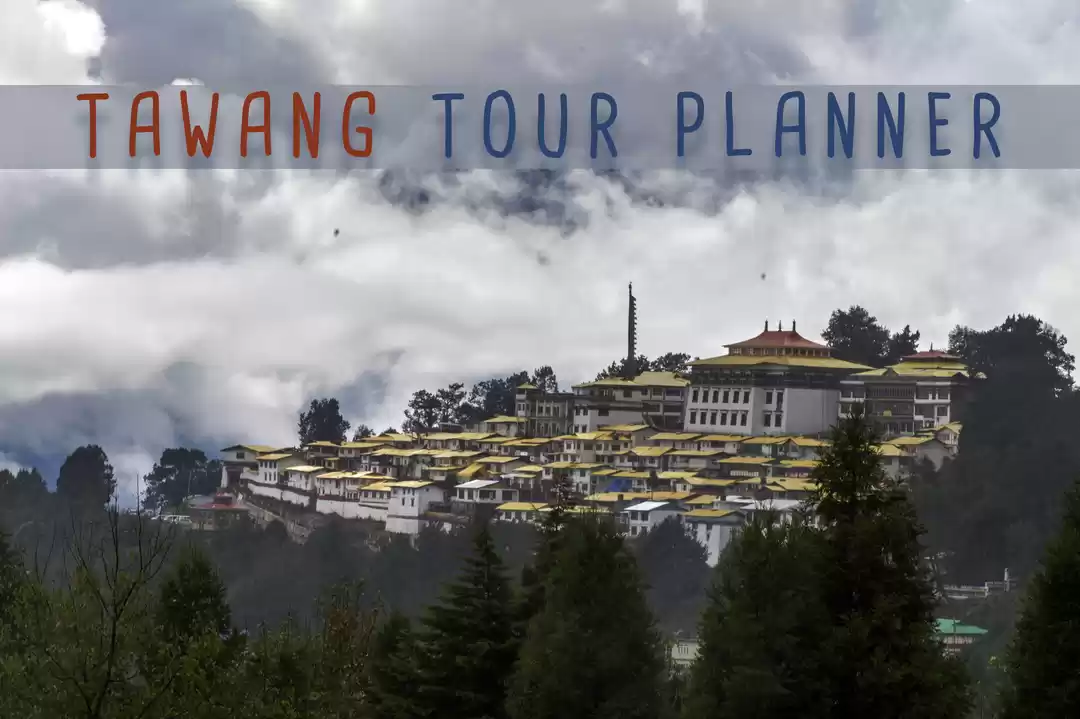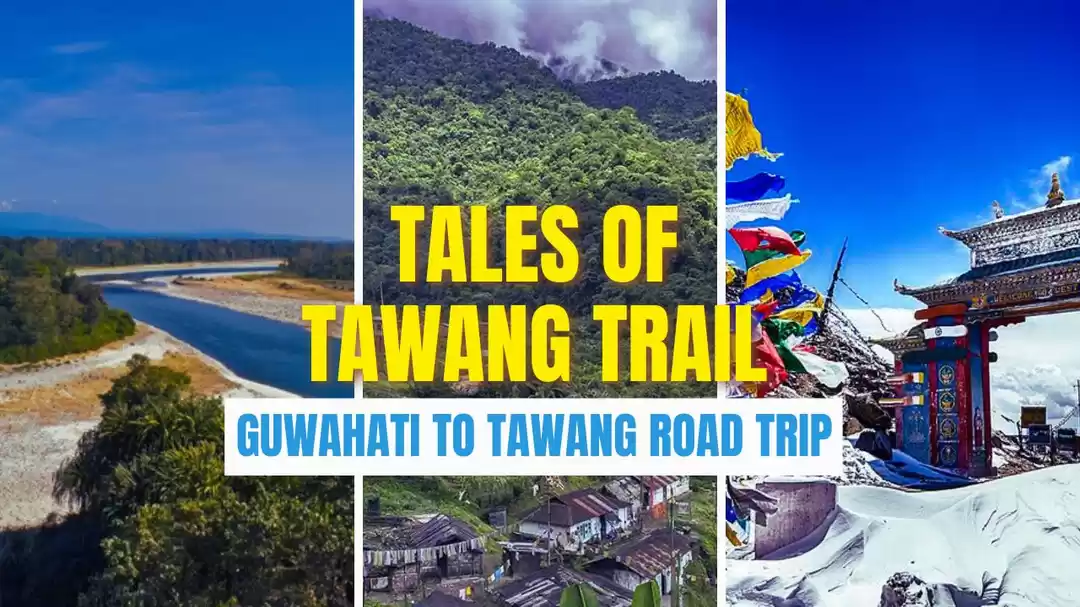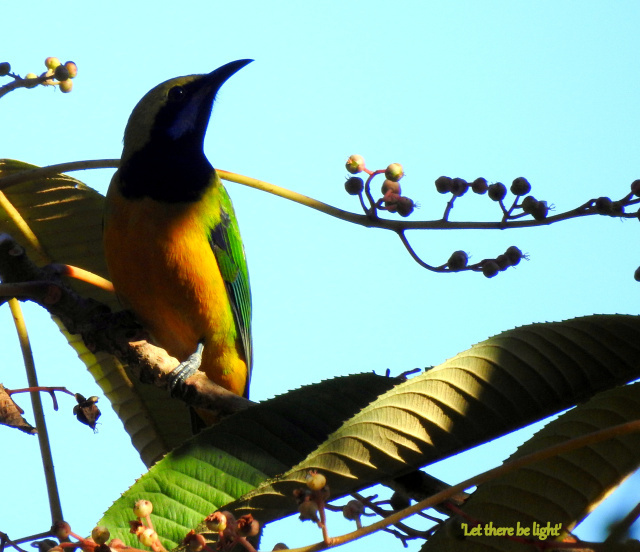
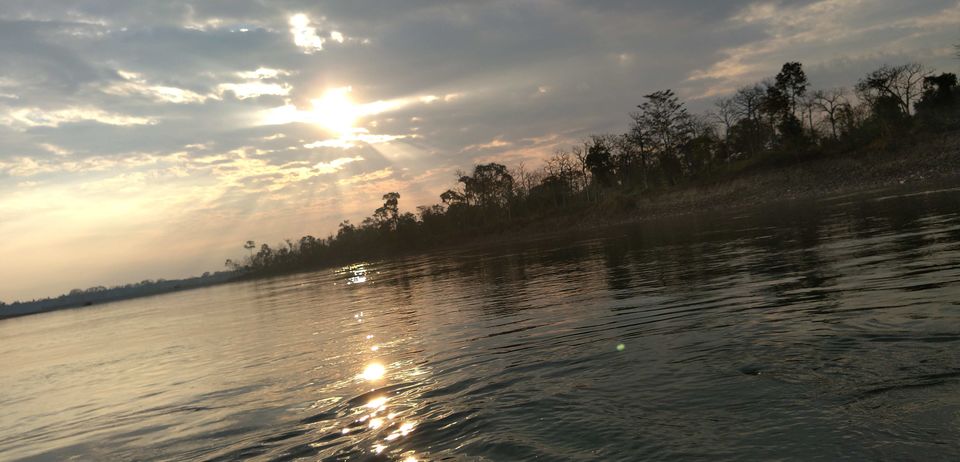
From childhood, I had been intrigued by stories about headhunters of Nagaland. As I grew older, I got to read books like Highway 39 and Land of the Dawn Lit Mountains. In the latter, the author, a lady from United Kingdom, rides solo from Guwahati all through Arunachal Pradesh. She has done a fine job in exploring and presenting the enigma that is North Eastern India . I read numerous blogs on experiential travels, watched numerous vlogs on YouTube and reports of birding trips ...all in these little explored states, to the far right of my country. When finally I got time to plan my trip, I had too many locations luring me and finalizing a trip turned out rather tricky. More so, because, it was end of the year and travelers all over India had become super active. Tickets were available only at sky high prices ......only flight tickets !!! Trains were all running full.....
Given the numerous constraints, I finally chalked out a plan, that would enable me to explore a bit and off course, bird-watch a bit !! Ever since, this bug for bird watching has bit me, I try to find places where at least I can have one or two morning sessions of birding !! I decided to give Arunachal a miss this time ( it required more time and planning ) and looked to visit Nagaland !! I chose the relatively lesser known Nameri National Park (in Assam ) over the much famous Kaziranga. Partly because, Kaziranga would be all booked up and crowded, and because, Nameri was good for bird watching !!! From Nameri, I would travel all the way to Khonoma, via Dimapur. Khonoma ,though quite remote, was a much celebrated birding spot. You see ...!!! Once this love for birding develops in you, there is no escaping its claws !!
On 23rd of December, we boarded an Indigo flight to Guwahati. At Guwahati, we put up in a hotel near the Kamakhya Temple. Early next morning, we walked to the temple and joined thousands of other devotees in a queue to pay homage to the Goddess. Red was the predominant color...buildings painted red, the priests wore red robes....the flowers offered were red hibiscuses.....we stood in queue and watched the sun rise and golden rays light up the temple tops....tens of goats (offered for sacrifice by devotees) thronged the premises. A tied and stressed bull at the sacrifice shed, made a painful sight..but ...that is how things work here. The Goddess needs her thirst to be quenched,...blood needs to flow....for fertility to prosper. After an almost 5 hour wait, we could finally get into the inner sanctum and pay our homage to the deity. We were now ready to embark on our journey further to the east.
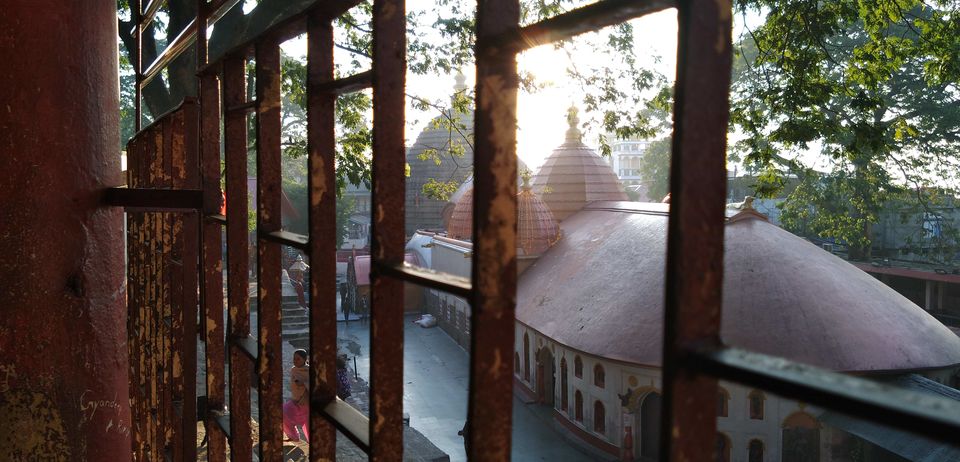
A light meal at Pudina restaurant, outside the Guwahati Junction, and then we boarded the ASTC bus to Tezpur. We reached Tezpur, after about 4 hours. The only noticeable part of this trip was that we happened to cross the seemingly unending expanse of the Brahmaputra. Tezpur is a little city, having its own little airport, and serves as a gateway to further travel into Arunachal. It also serves as good place to halt before further travel eastwards towards the famous Kaziranga. In our case, we would travel about 35 kms further east towards Nameri National Park.
Next day, after a small cab ride, we reached the Nameri Eco Camp. This was a beautiful facility managed by the ABACA - Assam Bhoreli Angling and Conservation Association. What was initially established many years ago to cater to the wishes of anglers worldwide, had now taken up the role of conservation and eco-tourism. The prized fish from the Jia Bhoreli river - the Golden Mahseer, was now protected and bred by the ABACA. It was a case of a social initiative, backed by good administrative support, and now they managed all conservation and tourism activities in the area.
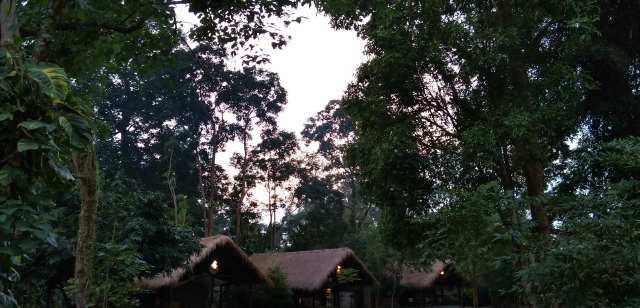
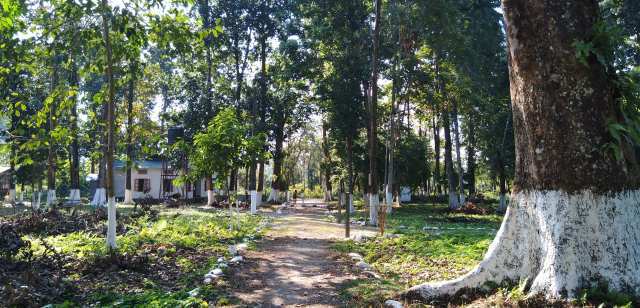
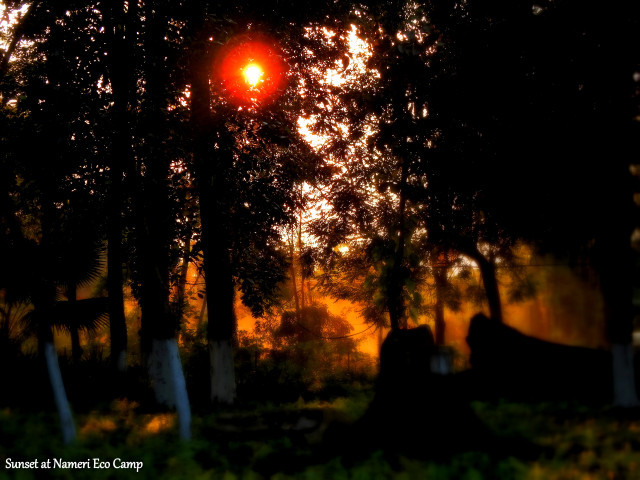
The property itself, was located in the buffer zone of the Nameri National Park, about 1 km from the Jia Bhoreli river. On the other side of the river, the core area of the forest commenced, stretching for kilometres, before merging seamlessly into the Pakke Tiger Reserve in Arunachal Pradesh. The eco-camp boasted greenery all around and the facilities had been set up in unison with nature, not in defiance. Flocks of red-breasted parakeets stayed in holes of large tree trunks, that were a part of the camp. Comprising of few wooden cottages and few tents, this place provided a true jungly experience. Our cottage was named Diji - 7 , after one of the tributaries of the Jia Bhoreli. In terms of birding, the place itself rewarded us with sightings of black naped monarch, spangled drongo, taiga flycatcher, white-rumped shama, white-throated fantail, blue throated barbet, hill myna, pin-tailed green pigeon, and the ever present parakeets.
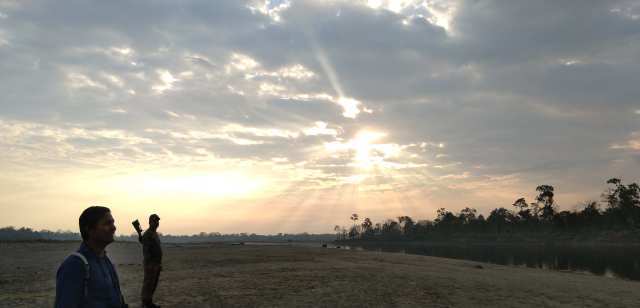
Next day, early morning , we got our permits for entry to the forest. We were accompanied by a forest guard and our birding guide.We walked upto the Jia Bhoreli, about a 15 min walk from the camp. The sky was cloudy and we all were concerned because such climate is not good for birding. Jia Bhoreli is a beautiful sight, anytime....may be a bit overenthusiastic in the rains.!! This is a tributary of the mighty Brahmaputra. It has its source high up in the mountains of Arunachal near Sela Pass, and it has a different name in Arunachal - Kameng. The grayish background pigmentation of the dull climate made the environment around seem ....still, silent...sleepy. The sun was trying to shine on his child...but the clouds were like a ragged curtain
We crossed the flowing Jia Bhoreli on manually propelled desi boats. To imagine the wrath of this emaciated stream in monsoon...!!!The trunks of big trees and an odd boulder here and there, were proof of the seasonal predation of the Jia Bhoreli. Then we had to walk along the dry riverbed to reach the edge of the Nameri NP. At nights, this would be the playground for the elephants. Now we were walking bravely, entrusting virtually all the security on a guard with a gun. Anyways, the black-crested bulbul greeted us as soon as we stepped foot in the jungle. It twisted its black crested head in impossible ways, and its yellow torso, all puffed up. Safari in the park is absolutely along 2-3 predefined routes. Our search for the elusive, critically endangered White-winged duck, took us away from the main trail. We jumped over tree trunks, stooped under branches and moved through thick vegetation. The habitats of this duck are swamps and streams deep inside the forest. We found the chestnut bellied Nuthatch, the beautiful Scaly Thrush, tens of Minivets, the vernal hanging Parrot, pygmy Woodpecker, golden fronted Leafbird, Ashy drongo, yellow bellied Fantail, maroon Oriole, Eurasian thick knee, the Peregrine falcon, pin tailed Green pigeon and a few other species. After a 8 km walk cum hike in the forest, we were exhausted. The walk back was more of trudge-drag affair, but I was happy with my shots.
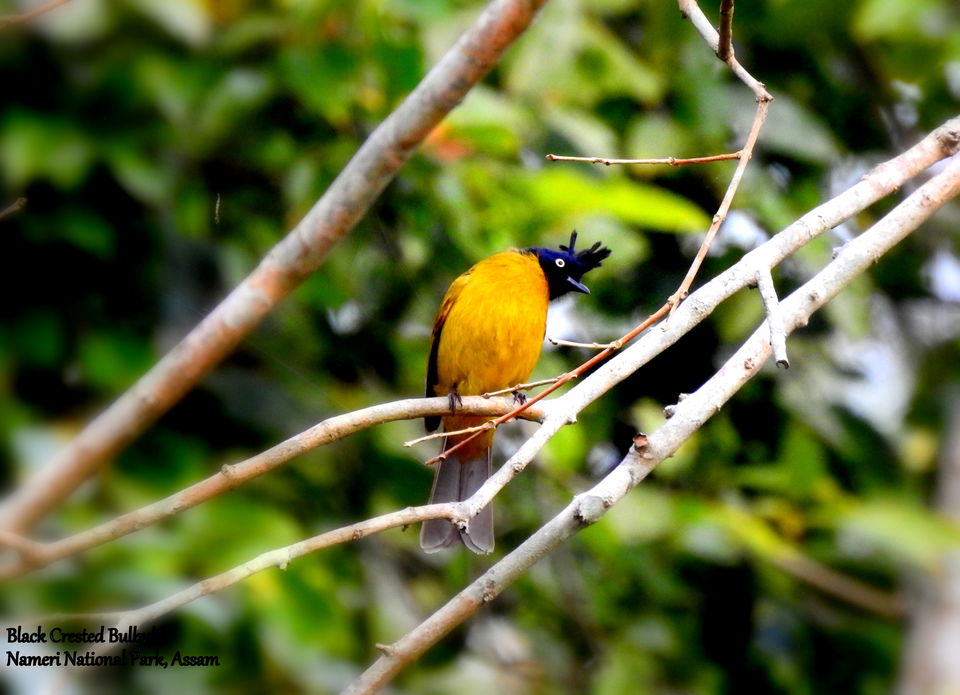
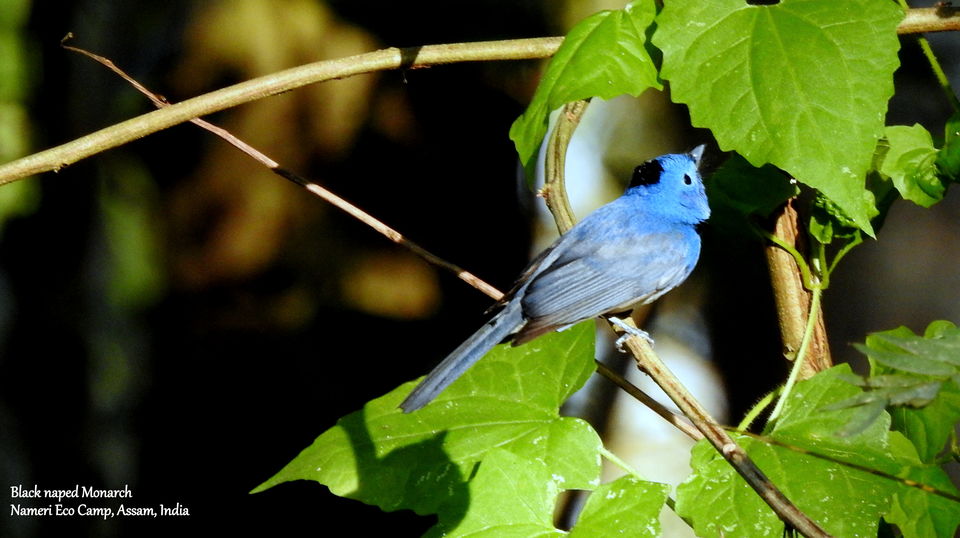
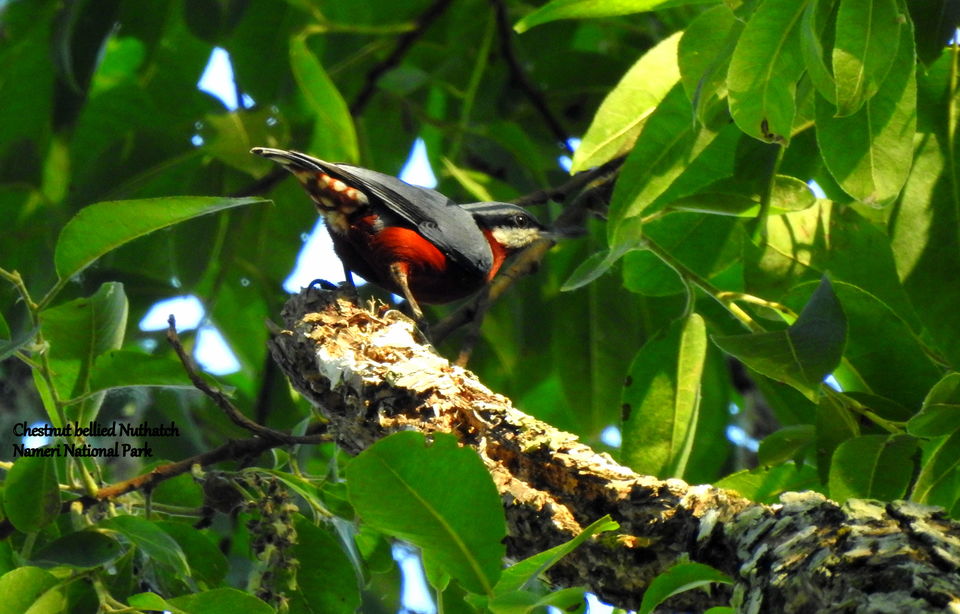
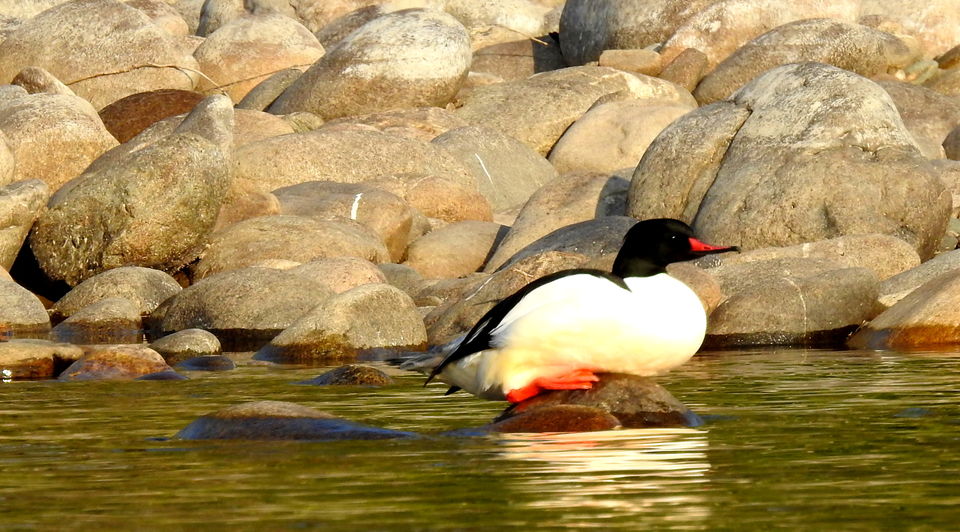
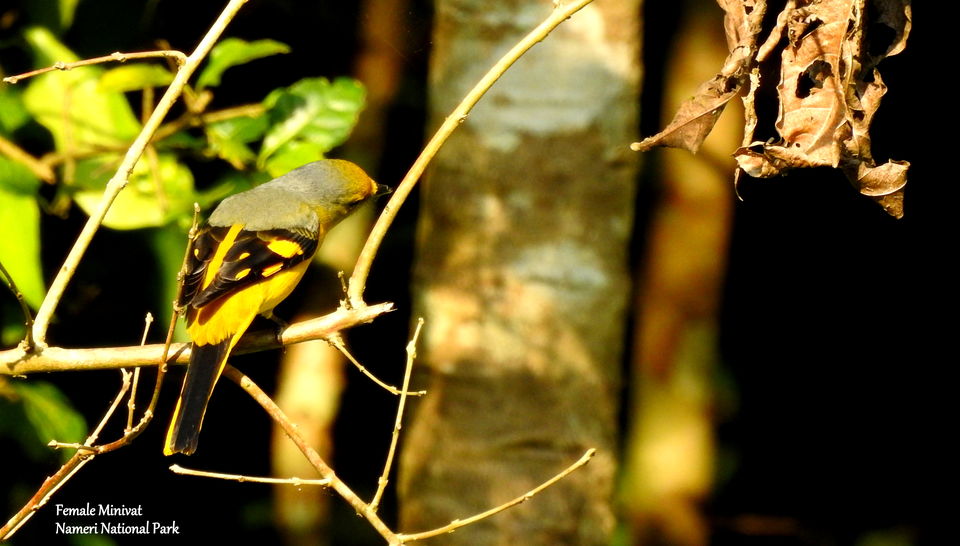
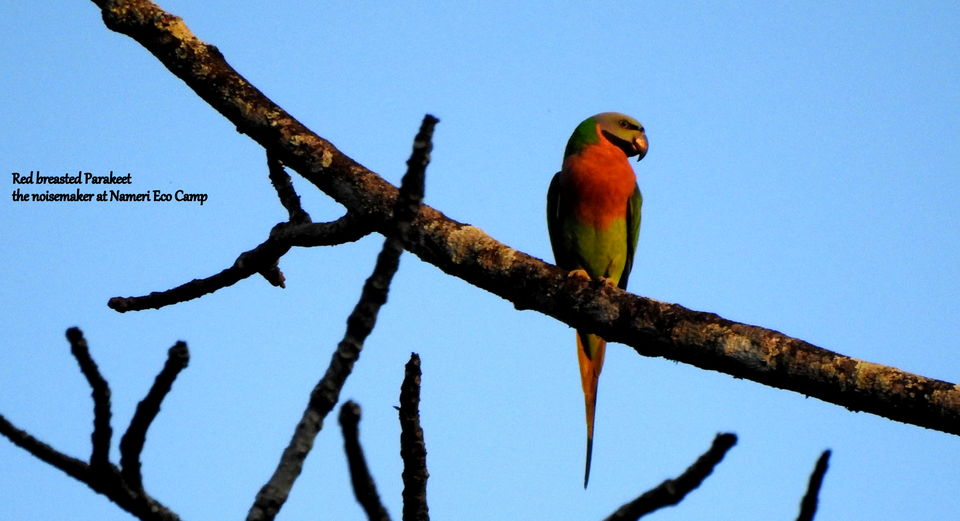

Post lunch, it was time to try rafting. Well, its nothing like Rishikesh.....the water is tame, absolutely pristine too, and there are only places with gradual slopes, where the flow breaks up and forms waves and auxiliary commotion. The forests stare at you from all sides with awkward silence. The boatmen..or rather the raft-men were from the Miri tribe.....once they used to be ace fishermen and fancy anglers would accompany them on fish-hunting. Now with modernisation and conservation, they have moved on. But the Jia Bhoreli remains a part, a beautiful part in their lives. On the dry river beds, on pebble and rocks, we could see cormorants drying their wings. Their beaks had turned white, it was their way to beautify themselves for the mating season. Black bird with glossy white beaks..they looked funny!!! Rudy shelducks were plenty....and so were the plain martins. We spotted a Peregrine falcon on a dry tree by the river and soon after, an Oriental Pied Hornbill on a similat spot. I had dreamt of the scene when multiple couples of Hornbills fly across the river as night draws in...and while on the raft, I saw a couple of Hornbills flying across right above our heads !!
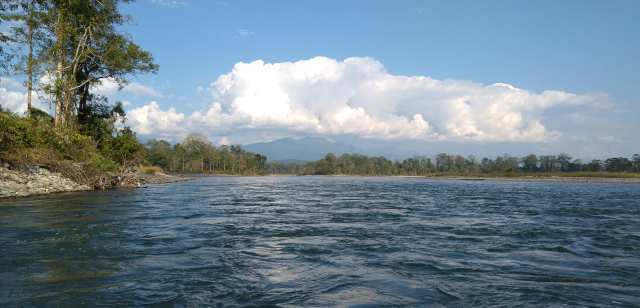
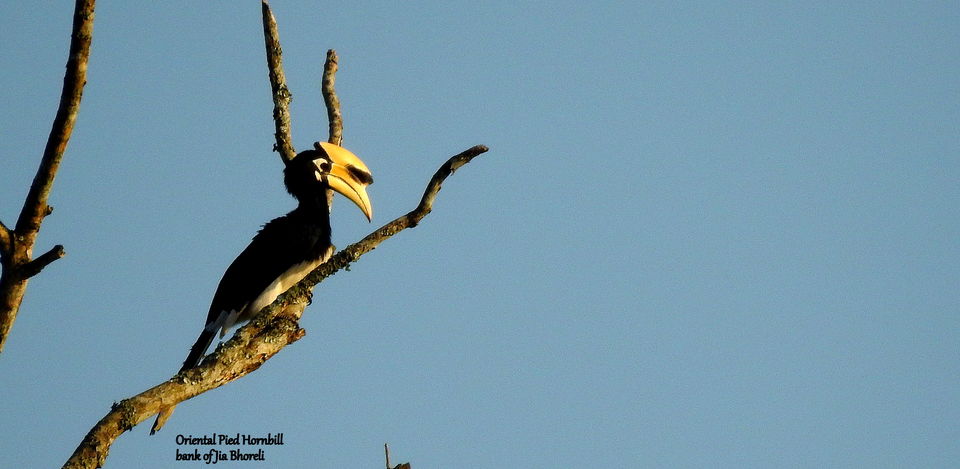
Our next destination was Khonoma. We left Nameri and reached a small railway junction by the name of Chaparmukh. It was a 3 hour journey and we reached Chaparmukh Jn., with 3 hours to kill before the train. Chaparmukh is a lustre-less, small village (or a very very small town !!) and we were here to catch the Dimapur bound BG Express. This single track non-electric railway infrastructure connected a major part of the North east. We reached Dimapur at around 9'o clock in the night. Dimapur provided justification for bringing our heavy woollens...at Nameri, they stayed warm inside the backpacks. Early next morning, we hired a small hatchback outside the railway station and moved towards Khonoma. Our co-passenger , an aged professor in the BG express, had warned us of terrible road conditions. Well, the road was almost kachha all through....there used to be a single lane road and it had not gone through any repair for tens of years..now..another lane was being made..the result. But we made it through. We were now in the Naga hills !!
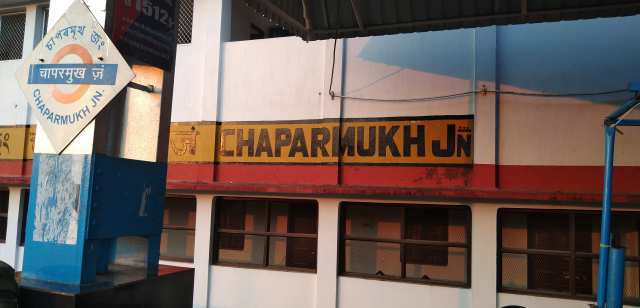
Khonoma is the mainstay of the proud Angami tribe....a small idyllic village of around 6000 people, an hours journey from Kohima. We found the village beautified with Christmas decorations. Lean tree branches had been painted and fixed by the side of the village path....and Origami-styled paper foldings of myriad shapes hung lightly on the painted branches. Houses of earth and wood, looked serene and clean.....the topmost point of these homes bore the red Star...a star shaped decorative structure, that would be lit up with bulbs at night....the typical celebration of the Christian festive season. We befriended our guide for the village tour, the effervescent K. Louis and had the opportunity to learn about the Angami way of life. A whole separate account may be made out of my understanding of the Angami way. But what essentially became brightly evident was that they had a much developed philosophy of social existence. The old tradition of headhunting was a mere whisper in the wind...and devout Christianism rules hearts now. But the basis of their being was strength from unity and clever utilization (not exploitation) of natural resources. They loved hunting, but themselves banned it realizing its effect on nature. The rational implementation of jhum cultivation, the level of craftsmanship in weaving cane baskets or woodwork, social bonding, celebration of festivals...overall a very simple and organic way of living....I found these men, psychologically much stable and superior than the average confused soul from our urbane real space. Louis arranged few servings of Zutho - a homemade, rice-based, fermented beverage...and we also got to taste tasty wild apple chips. The hospitality and simplicity was moving....indeed!!
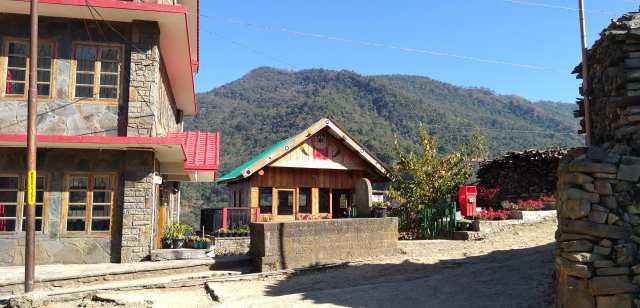
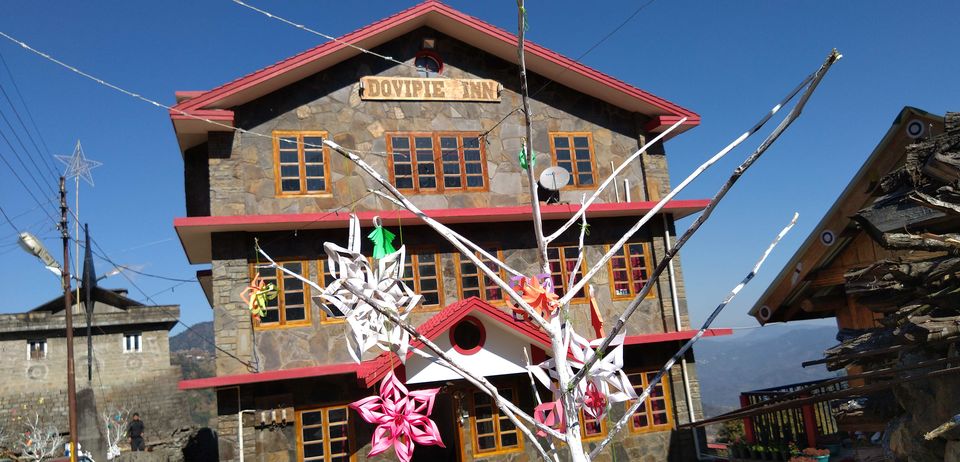
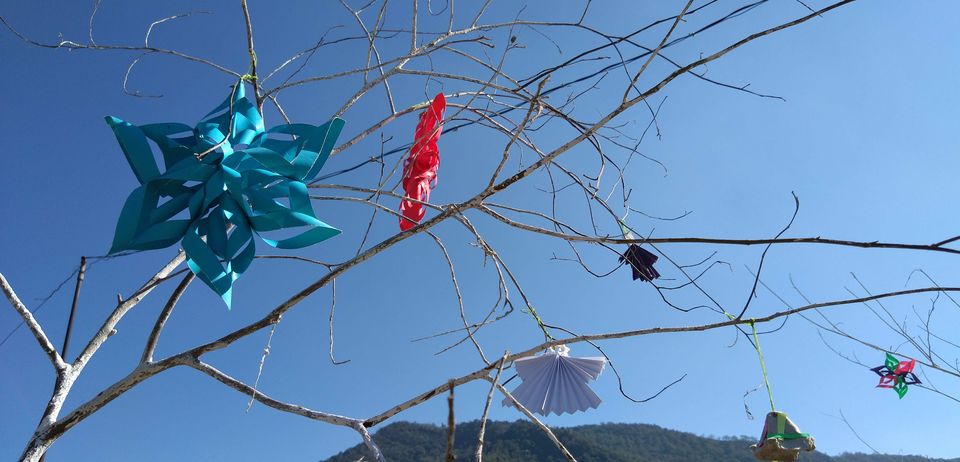
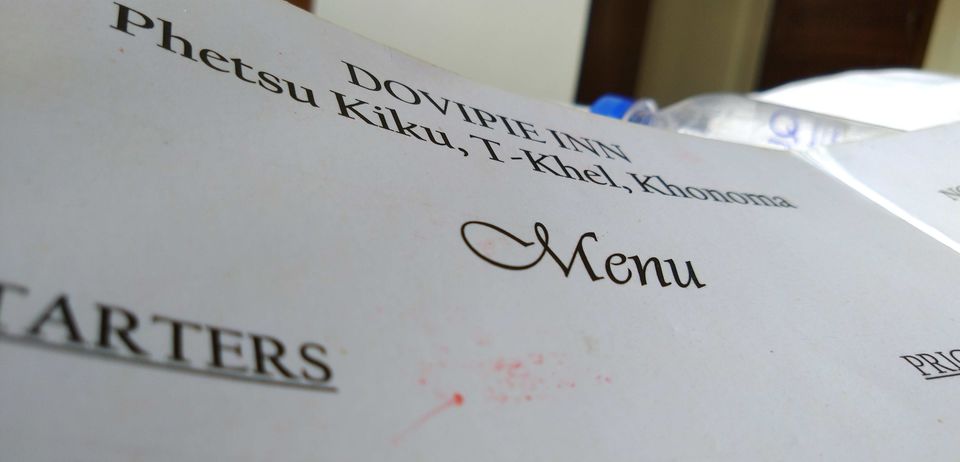
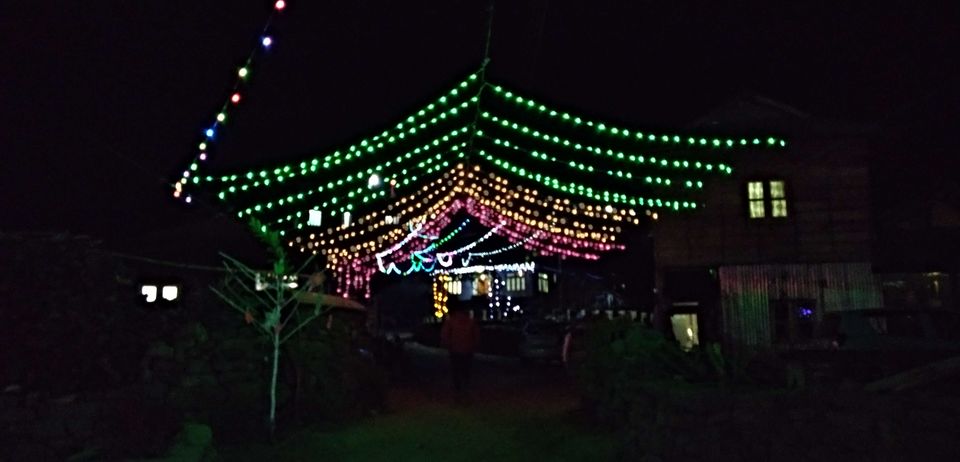
As we found out over the next two days that the forests in these parts were largely pristine....we hiked and drove kilometers on dusty roads.....explored the trail to Dzukou valley....followed trails of the Mithun - an bovine creature highly prozed across the North eastern hills. The Khonoma Nature Conservation & Tragopan Sanctuary promised some great birds, and while so many could not be sighted...I believe that was much due to my luck and perhaps, my lack of commitment. The birds sighted were mostly unique to this part of the world. The crested finchbills maintained watch from tops while striped laughing thrushes shouted from roadside thickets...cries of bamboo partridges could be heard very close...and desperate flowerpeckers jumped from shrub to shrub. Sunbirds, especially the red tailed, were aplenty. Fire tailed myzornis was seen...and we also spotted a red liocichla, deep inside the undergrowth. Most were lifers for me..like the beautiful orange bellied Leaf bird and the silver eared Mesia. Grey sibias kept the mood alive at all times. A rather open looking field of pollared alder trees provided great opportunities to photograph the olive backed Pipit and the crested Bunting. We explored the initial leg of the Dzukou valley trek from KNCTS parking lot onwards. The trail moved up through dense forests and up ahead it vanished into pregnant clouds. From the highest tree on the high ridge above us, a Mountain hawk eagle looked down upon us...and on a tree nearby, the great barbet started cawing incessantly....our experienced guide told us that Barbets call only during specified hours - a technique used by hunters in the forest to know the time of the day (no watches or other fancy stuff !!) Interestingly, I could satisfactorily shoot at least two species of warblers at Khonoma.....I never thought that I could click a warbler, they are too small and too fidgety.....the only explanation I guess is that warblers of Khonoma are camera friendly!!!
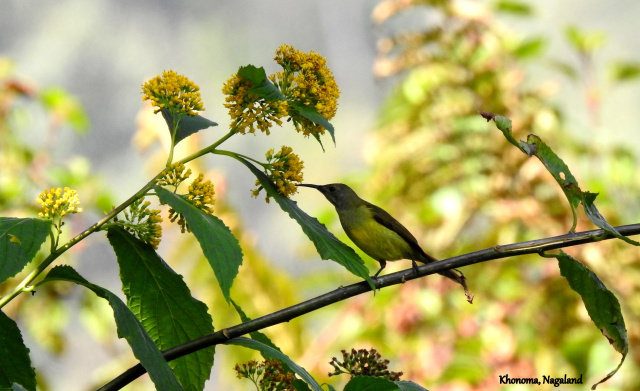

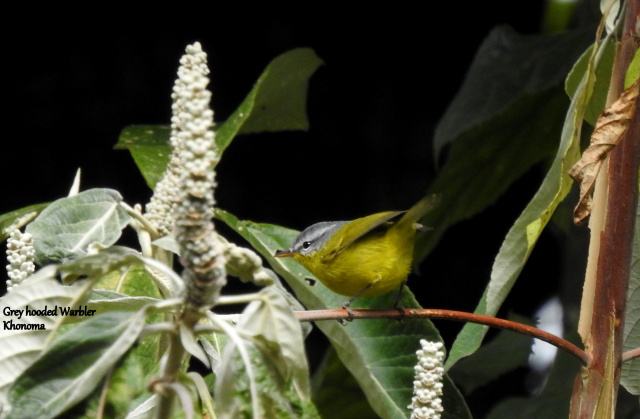
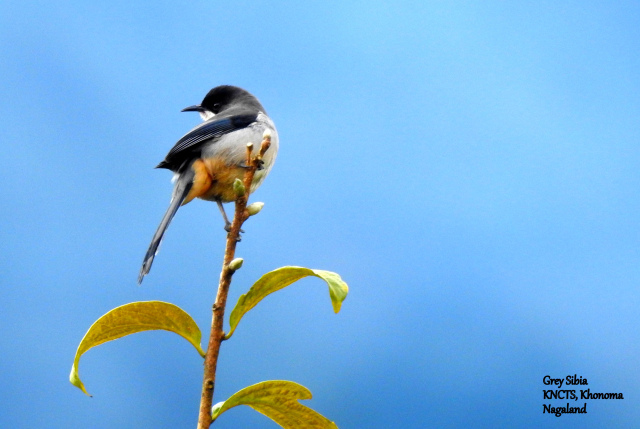
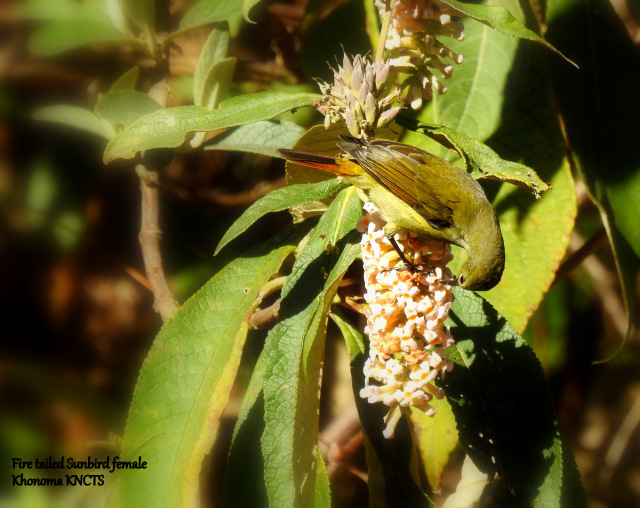
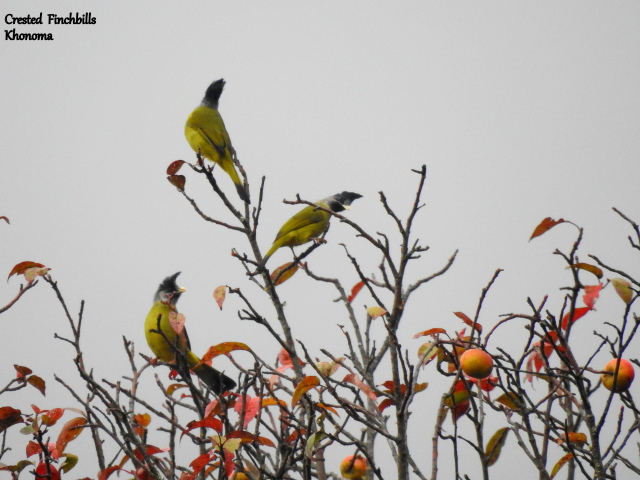
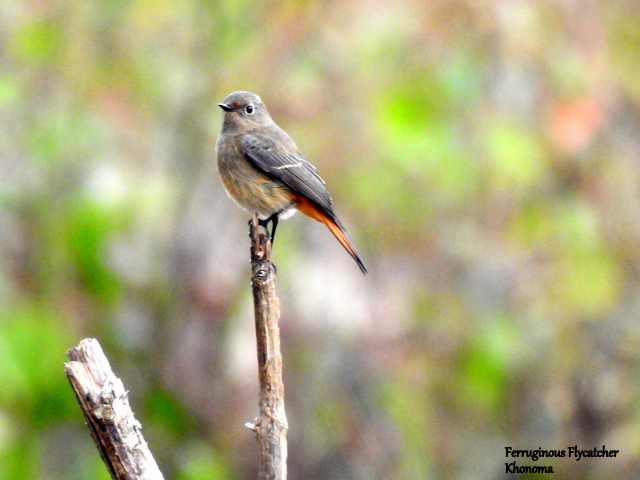
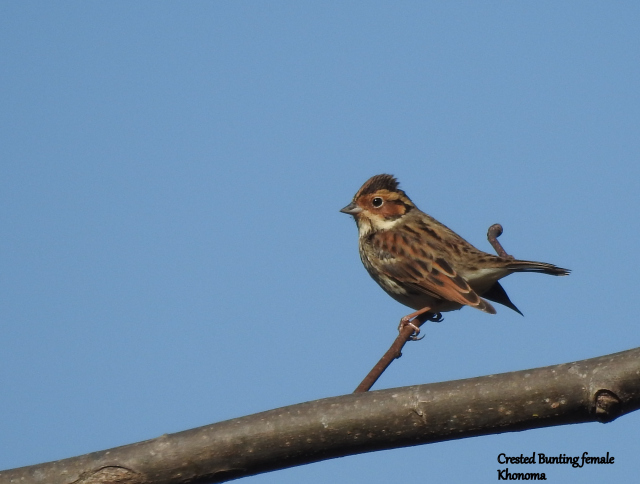
We left Khonoma and as our cab drove away from the Naga-styled welcome arch of the village, I felt a bit sad. I had fallen in love with the place.
Kohima was totally into holiday mood. All establishments- officer, eateries, shops, were closed. Every guy was back to his home in the village to celebrate the festivities with their family. We could not find a single restaurant to eat out and had to satisfy ourselves with the rather less-tasty food served by the hotel restaurant. A plate of pork momos I had on the footpath was a tasty consolation though!! We took a stroll in the Naga Bazaar and though, it was rather empty, we could find the fabled food items...snails, snakes, frogs, bugs and insects!!.... Dried chilli and dried fish....bamboo shoots, and some other items I could not hope to identify!! While love for pork was very evident, I found it difficult to imagine the way in which they consumed these delicacies .. ...the snail and the frog!!! Much of our time in Kohima was spent relaxing in the hotel room...I ended up watching Wanted for the umpteenth time on television.

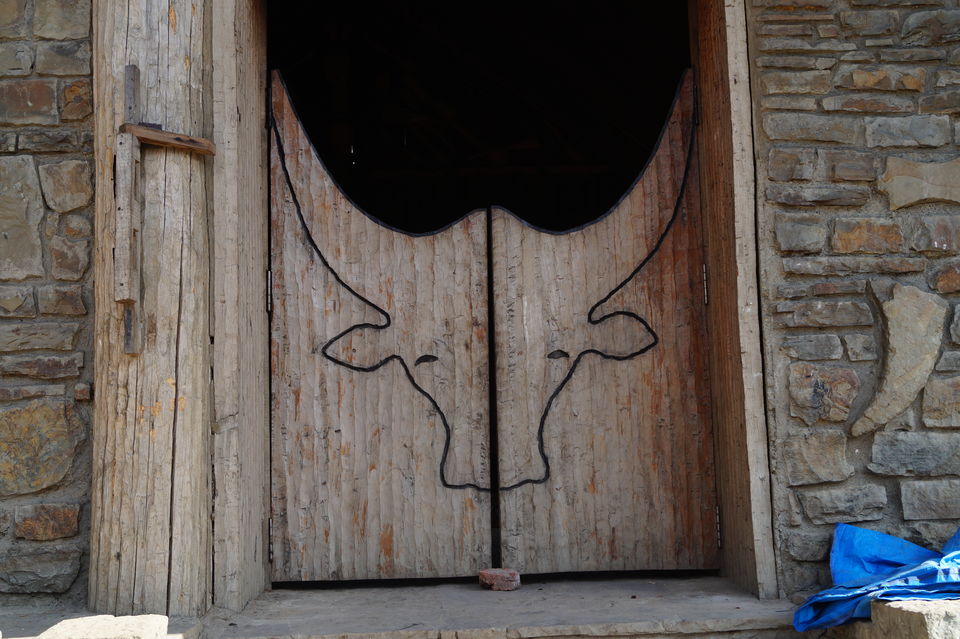
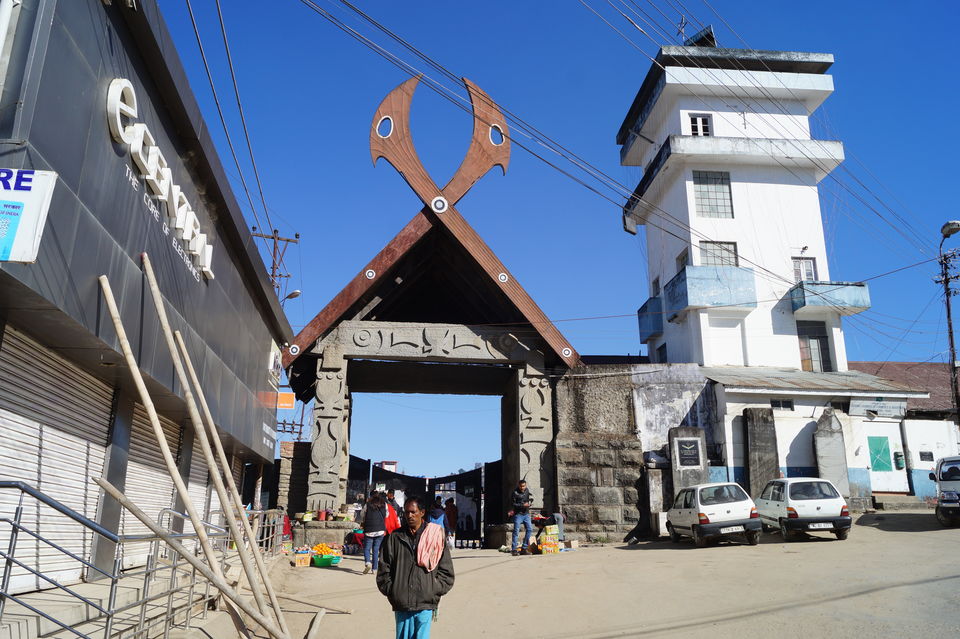
Our tour ended as we drove back to Dimapur and then, took the Nagaland Express to Guwahati. We had spent around 10 days, exploring the semi-evergreen forests in the Eastern Himalayan foothills and the evergreen sub-tropical forests of the Naga hills....lived amidst some genuine, free minded people, who took deep pride in their history.....Till the actual time comes, I shall keep wishing to visit Khonoma again ... the village with no shops...with no sorrow....blessed by nature....inhabited by humanity in its truest, simplest form.





